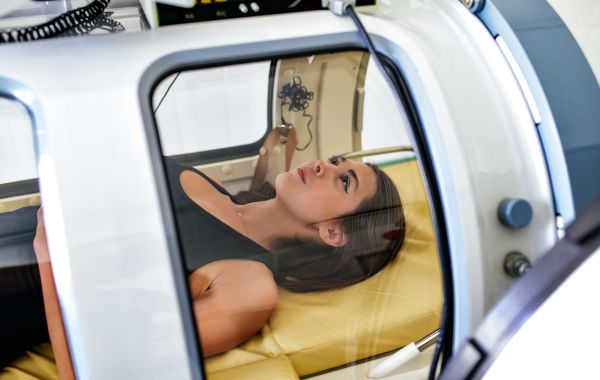So, you’re thinking about buying a hard hyperbaric chamber. Maybe you've heard the buzz—faster recovery, better sleep, sharper focus—and you're wondering if it’s time to bring that pro-level treatment home.
Fair enough. But here’s the thing: not all chambers are created equal. And unless you're swimming in medical jargon or happen to moonlight as a tech reviewer, navigating this purchase can feel... confusing at best.
Let’s clear the air (literally). Whether you're a performance-driven athlete, a wellness enthusiast, or someone just looking to feel better, here’s what you need to know before dropping thousands on your very own pressurized pod.
First—What Is a Hard Hyperbaric Chamber?
Before we get into specs and shopping tips, let’s get on the same page.
A hard hyperbaric chamber is a rigid, medical-grade capsule that allows you to undergo Hyperbaric Oxygen Therapy (HBOT).
You get inside, lie down, and breathe in pure oxygen while the chamber increases atmospheric pressure to a level much higher than normal. It’s like giving your entire body a deep oxygen soak.
Now, why “hard” specifically? Because there are also soft chambers—portable, lighter, more flexible options that typically operate at lower pressures. They’re kind of the “entry-level” version.
Hard hyperbaric chambers, though? These are the heavy-duty, high-performance units designed for deeper therapy and more serious results.
Why Go for a Hard Hyperbaric Chamber?
Good question. You could go with a soft chamber for basic wellness needs—but if you’re looking for deeper healing, better oxygen saturation, and long-term reliability, a hard chamber is the way to go. Here’s why:
- Higher pressure = deeper penetration. Hard chambers can reach up to 3.0 ATA or more. That means more oxygen molecules get dissolved into your blood plasma, reaching areas your circulatory system usually struggles to touch.
- Durability and safety. Steel or acrylic chambers are built to last—and to keep you safe while under high pressure. It’s not just a performance boost; it’s peace of mind.
- Medical-grade features. Think built-in monitors, temperature control, dual communication systems, and all the safety checks you’d want during high-pressure sessions.
So, is a hard hyperbaric chamber overkill? Not if you’re serious about recovery, immune support, or chronic condition management.
Ask Yourself: What’s Your Why?
Buying a hyperbaric chamber isn’t like picking out a blender. You need to know what you want out of it.
- Are you recovering from injury or surgery?
- Dealing with inflammation or autoimmune stuff?
- Looking for performance recovery like the pros?
- Managing long COVID, chronic fatigue, or something more complex?
Different goals call for different features. A hard hyperbaric chamber can accommodate a wide range of therapeutic goals, but it helps to be crystal clear on yours before jumping in.
Pressure Ratings: More Than Just Numbers
One of the biggest things that separates a high-quality hard chamber from a soft one is the pressure rating.
Most hard hyperbaric chambers can handle pressures of 1.5 ATA to 3.0 ATA. That’s a big deal. At these higher pressures, your body can absorb oxygen at a much faster and more efficient rate, which translates to faster tissue repair, reduced swelling, and quicker recovery times.
Lower pressure systems (typically under 1.3 ATA) can still be helpful, but if you’re tackling more serious issues, higher pressure is often what gets results.
So when you're shopping, check the specs. If a chamber maxes out at 1.3 ATA, you're not looking at a full medical-grade unit.
Size and Comfort—Because You’ll Be In There Awhile
Here’s something people forget to ask: How comfortable is it, really?
Sessions last anywhere from 60 to 90 minutes, sometimes even longer. If the chamber feels claustrophobic or cramped, you're not going to want to use it consistently.
Look for features like:
- Acrylic windows, so you’re not staring at a metal wall the whole time
- Roomy interiors where you can stretch out in
- Adjustable lighting and airflow
- Internal communication systems, so you’re not totally cut off from the outside world
Trust us—comfort equals consistency. And consistency is where the results happen.
Oxygen Delivery: It’s Not One-Size-Fits-All
Another biggie: how is oxygen delivered?
Most high-end hard chambers use an external oxygen concentrator that pipes in pure oxygen directly. Some even come with built-in oxygen monitoring and backup systems to maintain safe and consistent levels.
Here’s a quick tip: if the chamber includes a mask or hood system, that’s actually a good thing. It allows you to breathe near-100% oxygen directly without flooding the entire chamber, making it more efficient and safer.
Don't Skip the Safety Checklist
Let’s be real—this is high-pressure tech we’re talking about. You don’t want to cut corners here.
Make sure your chamber:
- Meets FDA or CE certification standards
- Has pressure relief valves and backup release systems
- Comes with trained installation support
- Offers clear maintenance instructions and support
Also, this sounds obvious, but make sure the manufacturer has a track record. A reputable brand like Oxygen8America’s Elite Plus isn’t just selling you a tank—they’re giving you a long-term health investment.
Price Tag Reality Check
Yes, a hard hyperbaric chamber is a serious investment. You’re likely looking at $15,000 and up—some models even push past $50K.
That said, if you’re regularly paying for HBOT sessions at a clinic, that cost adds up fast. Over time, having your chamber could save you money—plus it gives you the flexibility to use it on your schedule.
Still, ask about:
- Warranties
- Financing options
- In-home installation
- Long-term maintenance or service plans
You want to feel good about the purchase, not panic after the invoice.
Final Thought: Is It Right for You?
Let’s be honest—buying a hard hyperbaric chamber isn’t for everyone. But for those who are ready to invest in their health, their recovery, or just feeling better day-to-day, it can be life-changing.
The key is doing your homework, asking the right questions, and knowing your “why” before making a decision. Don’t rush it. Compare models. Look at reviews. And if something feels sketchy or too good to be true? Trust your gut.








